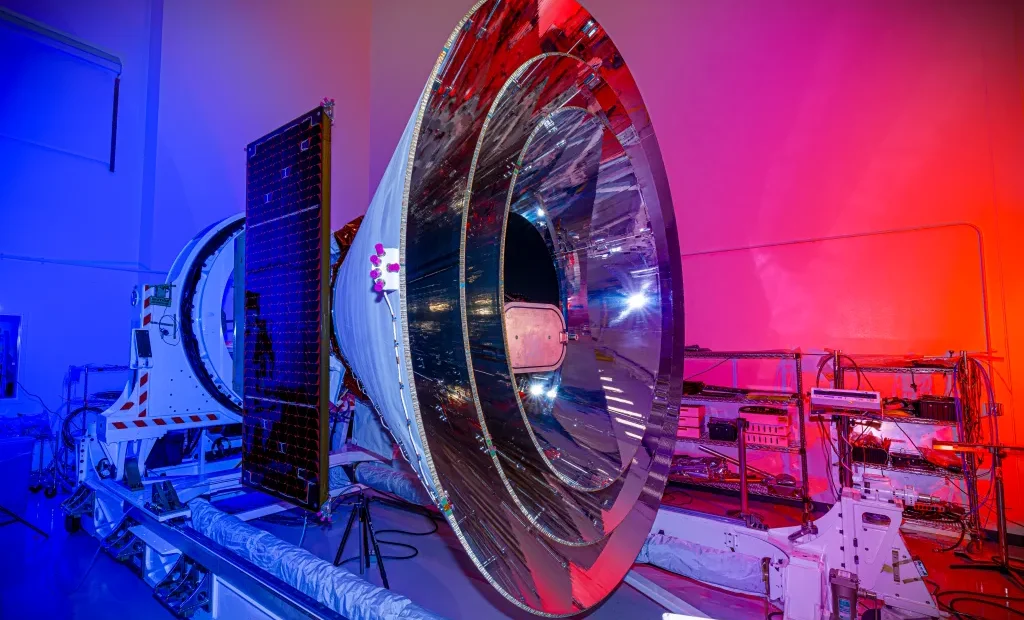NASA and SpaceX to launch SPHEREx astrophysics observatory

In late February 2025
NASA and SpaceX are preparing for the launch of the agency’s next groundbreaking astrophysics observatory, SPHEREx, in late February 2025. The mission, short for Spectro-Photometer for the History of the Universe, Epoch of Reionization and Ices Explorer, will be carried into space aboard a SpaceX Falcon 9 rocket from Vandenberg Space Force Base in California.
SPHEREx, the size of a subcompact car, will enter a polar orbit around Earth and create a comprehensive 3D sky map. Its powerful imaging capabilities will enable the observatory to capture images in every direction, effectively scanning the inside of a virtual globe.
This celestial map will cover hundreds of millions of stars and galaxies, capturing data across 102 different colours, each corresponding to a specific wavelength of light.
The data gathered by SPHEREx will be pivotal in advancing scientific understanding across three primary research areas. The first is a deeper exploration into the phenomenon known as inflation, a brief but intense period that occurred less than a second after the Big Bang when space expanded by an unfathomable trillion trillionfold.
By studying the distribution of galaxies across the universe, SPHEREx will help scientists uncover new insights into what caused this inflationary event and its underlying physics.
Another key scientific goal of the SPHEREx mission is to examine the collective glow emitted by galaxies, both near and far. This includes light from galaxies that have yet to be individually observed. The data will provide a much more complete understanding of all the radiating objects in the universe, offering a clearer picture of cosmic evolution and the behaviour of distant celestial bodies.
The third primary objective is to investigate the presence of icy compounds in our galaxy, specifically water, carbon dioxide, and other essential elements that could be integral to life. SPHEREx will search the Milky Way for these icy granules, providing valuable information on their location and abundance.
This data will help scientists assess the likelihood of such materials being incorporated into newly forming planets, offering critical insights into the potential for life beyond Earth.
In addition to SPHEREx, NASA’s PUNCH (Polarimeter to Unify the Corona and Heliosphere) mission will also launch aboard the same Falcon 9 rocket as a secondary payload.
Managed by NASA’s Goddard Space Flight Centre and led by the Southwest Research Institute, PUNCH will consist of a constellation of four small satellites. These will perform global, 3D observations of the Sun’s corona to understand better how mass and energy from the corona are transferred to form solar wind.
Based at the agency’s Kennedy Space Centre, NASA’s Launch Services Programme will manage the SPHEREx and PUNCH missions. The upcoming launch will mark a significant step in advancing humanity’s cosmos exploration, promising to unveil discoveries about the universe’s origins, structure, and potential for life beyond Earth.
Image: The data gathered by SPHEREx will be pivotal in advancing scientific understanding across three primary research areas. Credit: NASA
Last Updated on 2 months by Arnold Pinto













